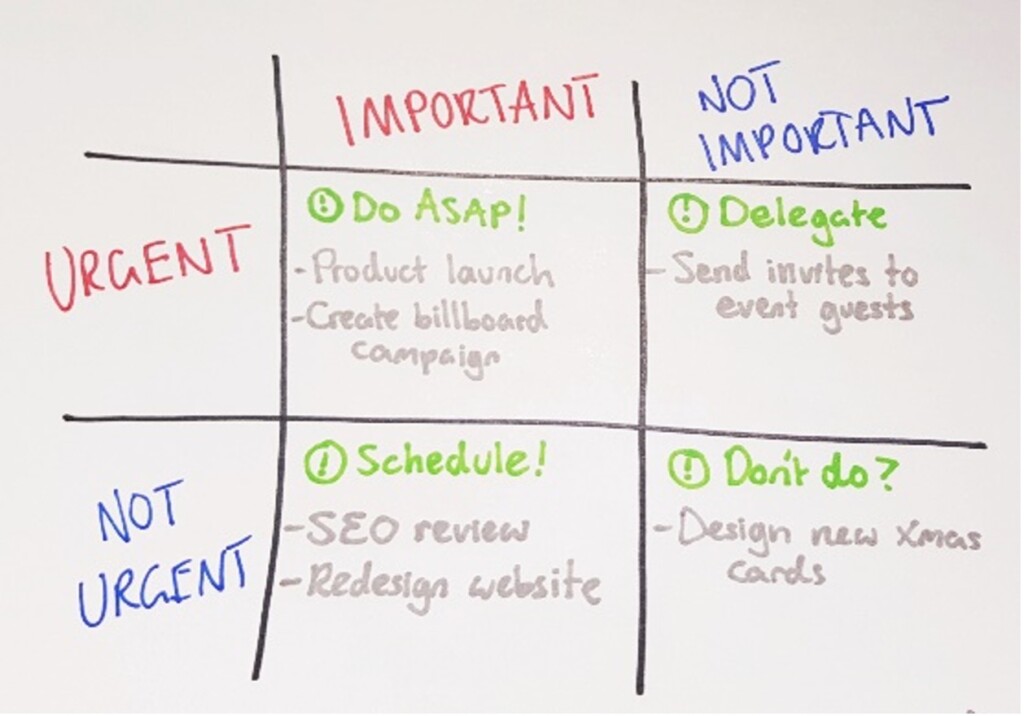Written By: Charles Blier
We’ve all heard it: Succession planning is important, but not urgent! If you’re familiar with the 4-quadrant grid, Important and Urgent are laid out for you to manage the issues you deal with every day. By this model, succession planning likely falls in the bottom left quadrant.

You don’t have to plan for someone to be leaving soon for your day to unfold smoothly. But what if we changed the paradigm and moved succession planning to the top left quadrant – Important and Urgent – such that the issue becomes something you have on your mind all the time.
Most professionals in any industry recognize that succession planning is a healthy organizational practice that we all need to exercise. But what if tomorrow a key member of your team won the lottery or, God forbid, got hit by a truck, or told you that they are leaving for a better opportunity? What would you do? Likely you’d find yourself in a tight spot having to find a solution.
Why not do something about it before such an event turns into an emergency? Many will admit to not necessarily knowing how to go about it or feeling uncomfortable prioritizing succession planning. Using the analogy of physical exercise, you don’t have to exercise to stay healthy but if one day, you find yourself in the emergency room because you neglected physical exercise, it won’t matter what important plans you had on your agenda that day. This emergency supersedes everything and derails your schedule. Likewise, by adding succession planning to your regular professional practice, you limit the risk of an emergency created by someone leaving.
Steve Paccagnan, CEO of Panorama Mountain Resort in British Columbia leads the charge on succession planning at his resort and he frames it this way, “The leadership pipeline is more important than ever given our industry’s current and future labor challenges. The tools and processes have tremendous benefits if planned and done well. A critical success factor is constant, consistent, and continual communications.”
Michele Beauchemin, VP of Organizational Development for Les Sommets, Quebec’s largest conglomerate, said that at a minimum, to achieve meaningful results with succession plans, the following is needed:
- Be well prepared and be aligned with corporate goals and objectives in order to identify the key success factors of your succession plans.
- Identified who the high potential individuals are, and those who will benefit from a clear career path.
- Make the transition harmonious, share the power and authority. Be open to change and willing to let go.
- Communicate, communicate, communicate with transparency, effectiveness, and cohesion.
Succession planning can be simple, but not necessarily easy. By reframing the process, we can turn it into an easier conversation to have with our team members.
Step 1: Learn where your team members want to be in 5 years. This valuable conversation can be used in annual performance discussions.
Step 2: For those that indicate they’re happy with where they are and don’t have high aspirations for growth, a plan is needed to keep up with “knowledge inflation” – i.e., how to keep them growing professionally at a rate of 2 – 3% per year and keep up with their position’s evolving best practices.
Step 3: For those that indicate aspirations for senior positions or promotions, a plan is needed to help them grow 8 – 10% per year. This is where a more detailed plan is needed.
Either way, a plan should be drafted by the individual including SMART goals (Specific, Measurable, Attainable, Realistic, Timely) that are referenced in ongoing 1:1 meetings and performance reviews. As their leader, your role is to coach them to be ready for the next position or goal they’re seeking.
By reframing succession planning as an important and urgent matter, we are more likely to make it a regular priority. As a high-performing professional, you likely wouldn’t come to work without a defined list of priorities for that day. That’s management 101. If succession planning is important to you, you’ll dedicate the time to manage it.
At Panorama Mountain Resort, Steve Paccagnan has found that when solidly executed, succession plans:
- Encourage promoting from within and improves talent retention.
- Need collective ownership; it’s everyone’s responsibility, not just the job of HR
- Require transparency to effect change. Everyone needs to know that there is a commitment to the leadership strategy and the process.
- Keep it simple!
- Track, measure and share the results. Tell your people success stories.
Succession planning is an important people-first strategy at all levels within the organization. The positive outcomes will be improved culture, enhanced operations and guest experience, and financial benefits.
Everybody wins when a solid succession plan becomes part of the day to day: Employees, Guests, and Shareholders. It’s the greatest opportunity given to leaders in organizations!








